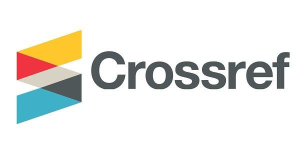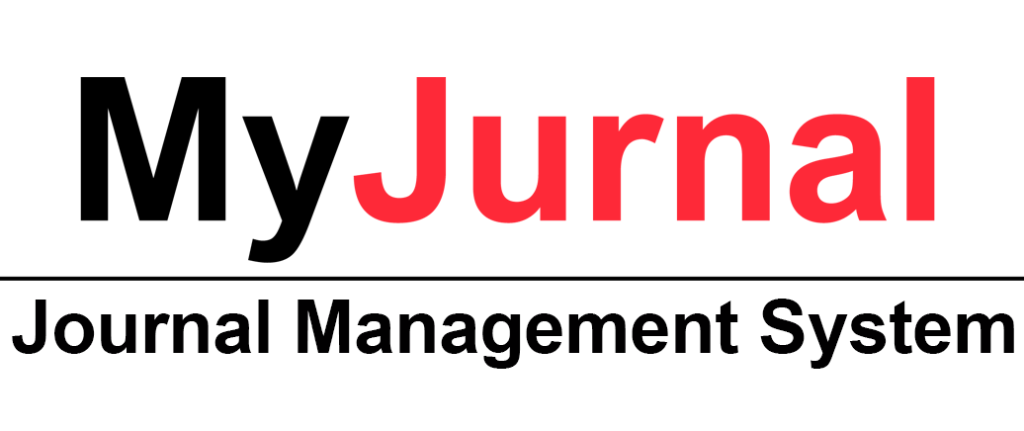Integrating computer-related technology into instructional practice at a higher learning institution in Malaysia
DOI:
https://doi.org/10.31436/ijes.v5i1.152Abstract
Malaysian Higher Learning institutions have embraced the 21st century skills in teaching and learning to ensure career readiness among learners. Information Communication Technology tools provide the opportunity for educators to address problem-solving and project-based learning in both face-to-face and blended learning. However, there have been issues of educators’ awareness and skills in utilizing the technology tools in the instructional processes. This study attempts to explore the experience and awareness among lecturers to integrate computer-related technologies in undergraduate classrooms. In-depth semi-structured interviews were conducted with two lecturers who are experts in foreign language and one from Instructional Technology field. In-depth semi structured interviews and observations became the main qualitative instruments for this study. The purpose of the study sought to reveal the pedagogical approach and types of Information technology adopted in the classrooms. This study addressed their awareness and issues related to the use of technology in the classroom. The results were thematized based on Web 2.0 tools integration, pedagogical approach in addressing higher order thinking skills and student career readiness. Lecturers were found to be aware of the relevance of Web 2.0 tools for instructional purposes. However, they highlighted low internet speed as the main challenge in their efforts to integrate technology into their instructional activities. This research contributes to the area of TPACK (Technology Pedagogical Content Knowledge) by highlighting the application of computer-related technologies into classroom instruction and how such technologies are matched with learner-centered instructional strategies to enhance learners’ 21st century skills that are essential for career readiness.Metrics
Metrics Loading ...
References
Ali, Guma, Faruque A Haolader, and Khushi Muhammad. 2013. “The Role of ICT to Make Teaching-Learning Effective in Higher Institutions of Learning in Uganda.” International Journal of Innovative Research in Science, Engineering and Technology 2 (8): 4061–73.
Alismail, Halal Ahmed, and Patrick McGuire. 2015. “21 St Century Standards and Curriculum: Current Research and Practice.” Journal of Education and Practice 6 (6): 150–55.
Almekhlafi, Abdurrahman Ghaleb, and Farouq Ahmad Almeqdadi. 2010. “Teachers ’ Perceptions of Technology Integration in the United Arab Emirates School Classrooms.” Educational Technology & Society 13 (1): 165–75.
Amanda, S . H. 2015. “Digital Games for 21st Century Learning: Teacher Librarians ’ Beliefs and Practices.” Master Dissertation, University of North Dakota.
Embi, Amin Mohamed. 2011. “E-Learning in Malaysian Institutions of Higher Learning: Status, Trends and Challenges.” In International Lifelong Learning Conference, 14–15. Kuala Lumpur.
Fook, Chan Yuen. 2011. “Pre- Service Teachers ‘ Training in Information Communication and Technology for the ESL Classrooms in Malaysia.” Turkish Journal of Distance Education 11 (3): 97–108.
Graham, Charles R. 2011. “Computers & Education Theoretical Considerations for Understanding Technological Pedagogical Content Knowledge ( TPACK ).” Computers & Education 57 (3). Elsevier Ltd: 1953–60. doi:10.1016/j.compedu.2011.04.010.
Guzey, S.S; Roehrig, G.H. 2012. “Integrating Educational Technology into the Secondary Science Teaching.” Contemporary Issues in Technology and Teacher Education 12 (2).
Harris, Judith B, and Mark Hofer. 2015. “Technological Pedagogical Content Knowledge (TPACK) in Action: A Descriptive Study of Secondary Teachers’ Curriculum-Based, Technology-Related Instructional Planning.” Journal of Research on Technology in Education 43 (3).
Hertz, Beth Mary. 2011. “What Does ‘Technology Integration’ Mean?” eduTopia. https://www.edutopia.org/blog/meaning-tech-integration-elementary.
Kajuna, W. L. 2009. “Implementation of Technology Integration in Higher Education: A Case Study of the University of Dar-Es-Salaam in Tanzania.” PhD Dissertation, Ohio University.
Kalonde, Gilbert. 2014. “Teacher Educators ’ Technology Decisions and the Extent to Which They Model Technologies for Inclusive Classrooms in Teaching.” PhD Disseration, Southern Illinois University Carbondale.
Kinuthia, Ngugi Elias. 2012. “Challenges of Information and Communications Technology (Ict ) Integrated in Secondary Education : A Case of Nakuru County , Kenya.” Masters Thesis, Kenyatta University.
Mcadams, Laurie. 2013. “Innovate Literacy Instruction with a Classroom Computer : A Solid Rationale for the Integration of Specific Digital Tools.” Texas Journal of Literacy Education 1 (1): 54–59.
Ministry of Education Malaysia. 2013. “Malaysia Education Blueprint 2013 - 2025.” Putrajaya: Kementerian Pendidikan Malaysia.
Noraddin, Enas Mohamed, and Neo Tse Kian. 2014. “Academics’ Attitudes Toward Using Digital Games for Learning & Teaching in Malaysia.” Malaysian Online Journal of Educational Technology 2 (4): 1–21.
Nyirongo, Nertha Kate. 2009. “Technology Adoption and Integration : A Descriptive Study of a Higher Education Institution in a Developing Nation.” PhD Thesis, Virginia Polytechnic and State University.
Raja, Maznah Raja; Sulaiman Abdul Halim. 2011. “E-L Earning Strategies in Malaysian Higher Education Institutions.” In , 1–11. Nova Science Publishers.
Rathsack, Carrie. 2012. “A Profile of Early 21st Century Teachers of Northwest Ohio: The Relationship between Teachers ’ Technology Integration and Leadership Practices.” PhD Dissertation, Bowling Green State University.
Rice, Marilyn P, Daphne Johnson, Bobby Ezell, Michelle Pierczynski Ward, Marilyn P Rice, Daphne Johnson, Bobby Ezell, et al. 2008.
“Preservice Teachers ’ Guide for Learner-Centered Technology Integration into Instruction.” Emerald Insight 5 (2): 113–34.
Salehi, Hadi, Mohammad Shojaee, and Susan Sattar. 2014. “Using E-Learning and ICT Courses in Educational Environment: A Review.” English Language Teaching 8 (1): 63–70.
Simin, Ghavifekr, and Ibrahim Mohammed Sani. 2015. “Effectiveness of ICT Integration in Malaysian Schools : A Quantitative Analysis.” International Research Journal for Quality in Education 2 (8).
Yarbro, Jessica, Katherine McKnight, Stephen Elliott, Alexander Kurz, and Liane Wardlow. 2016. “Digital Instructional Strategies and Their Role in Classroom Learning.” Journal of Research on Technology in Education 48 (4): 274–89.
Alismail, Halal Ahmed, and Patrick McGuire. 2015. “21 St Century Standards and Curriculum: Current Research and Practice.” Journal of Education and Practice 6 (6): 150–55.
Almekhlafi, Abdurrahman Ghaleb, and Farouq Ahmad Almeqdadi. 2010. “Teachers ’ Perceptions of Technology Integration in the United Arab Emirates School Classrooms.” Educational Technology & Society 13 (1): 165–75.
Amanda, S . H. 2015. “Digital Games for 21st Century Learning: Teacher Librarians ’ Beliefs and Practices.” Master Dissertation, University of North Dakota.
Embi, Amin Mohamed. 2011. “E-Learning in Malaysian Institutions of Higher Learning: Status, Trends and Challenges.” In International Lifelong Learning Conference, 14–15. Kuala Lumpur.
Fook, Chan Yuen. 2011. “Pre- Service Teachers ‘ Training in Information Communication and Technology for the ESL Classrooms in Malaysia.” Turkish Journal of Distance Education 11 (3): 97–108.
Graham, Charles R. 2011. “Computers & Education Theoretical Considerations for Understanding Technological Pedagogical Content Knowledge ( TPACK ).” Computers & Education 57 (3). Elsevier Ltd: 1953–60. doi:10.1016/j.compedu.2011.04.010.
Guzey, S.S; Roehrig, G.H. 2012. “Integrating Educational Technology into the Secondary Science Teaching.” Contemporary Issues in Technology and Teacher Education 12 (2).
Harris, Judith B, and Mark Hofer. 2015. “Technological Pedagogical Content Knowledge (TPACK) in Action: A Descriptive Study of Secondary Teachers’ Curriculum-Based, Technology-Related Instructional Planning.” Journal of Research on Technology in Education 43 (3).
Hertz, Beth Mary. 2011. “What Does ‘Technology Integration’ Mean?” eduTopia. https://www.edutopia.org/blog/meaning-tech-integration-elementary.
Kajuna, W. L. 2009. “Implementation of Technology Integration in Higher Education: A Case Study of the University of Dar-Es-Salaam in Tanzania.” PhD Dissertation, Ohio University.
Kalonde, Gilbert. 2014. “Teacher Educators ’ Technology Decisions and the Extent to Which They Model Technologies for Inclusive Classrooms in Teaching.” PhD Disseration, Southern Illinois University Carbondale.
Kinuthia, Ngugi Elias. 2012. “Challenges of Information and Communications Technology (Ict ) Integrated in Secondary Education : A Case of Nakuru County , Kenya.” Masters Thesis, Kenyatta University.
Mcadams, Laurie. 2013. “Innovate Literacy Instruction with a Classroom Computer : A Solid Rationale for the Integration of Specific Digital Tools.” Texas Journal of Literacy Education 1 (1): 54–59.
Ministry of Education Malaysia. 2013. “Malaysia Education Blueprint 2013 - 2025.” Putrajaya: Kementerian Pendidikan Malaysia.
Noraddin, Enas Mohamed, and Neo Tse Kian. 2014. “Academics’ Attitudes Toward Using Digital Games for Learning & Teaching in Malaysia.” Malaysian Online Journal of Educational Technology 2 (4): 1–21.
Nyirongo, Nertha Kate. 2009. “Technology Adoption and Integration : A Descriptive Study of a Higher Education Institution in a Developing Nation.” PhD Thesis, Virginia Polytechnic and State University.
Raja, Maznah Raja; Sulaiman Abdul Halim. 2011. “E-L Earning Strategies in Malaysian Higher Education Institutions.” In , 1–11. Nova Science Publishers.
Rathsack, Carrie. 2012. “A Profile of Early 21st Century Teachers of Northwest Ohio: The Relationship between Teachers ’ Technology Integration and Leadership Practices.” PhD Dissertation, Bowling Green State University.
Rice, Marilyn P, Daphne Johnson, Bobby Ezell, Michelle Pierczynski Ward, Marilyn P Rice, Daphne Johnson, Bobby Ezell, et al. 2008.
“Preservice Teachers ’ Guide for Learner-Centered Technology Integration into Instruction.” Emerald Insight 5 (2): 113–34.
Salehi, Hadi, Mohammad Shojaee, and Susan Sattar. 2014. “Using E-Learning and ICT Courses in Educational Environment: A Review.” English Language Teaching 8 (1): 63–70.
Simin, Ghavifekr, and Ibrahim Mohammed Sani. 2015. “Effectiveness of ICT Integration in Malaysian Schools : A Quantitative Analysis.” International Research Journal for Quality in Education 2 (8).
Yarbro, Jessica, Katherine McKnight, Stephen Elliott, Alexander Kurz, and Liane Wardlow. 2016. “Digital Instructional Strategies and Their Role in Classroom Learning.” Journal of Research on Technology in Education 48 (4): 274–89.
Downloads
Published
2018-06-07
How to Cite
Malecela, I. O. (2018). Integrating computer-related technology into instructional practice at a higher learning institution in Malaysia. IIUM Journal of Educational Studies, 5(1), 76–92. https://doi.org/10.31436/ijes.v5i1.152
Issue
Section
Articles
License
The Journal will own copyright to all published works and have the right of first publication, both in print and online, unless other arrangements are made with the Editors in advance. It is the author`s responsibility to ensure that where copyright materials are included within an article the permission of the copyright holder has been obtained beforehand.






















